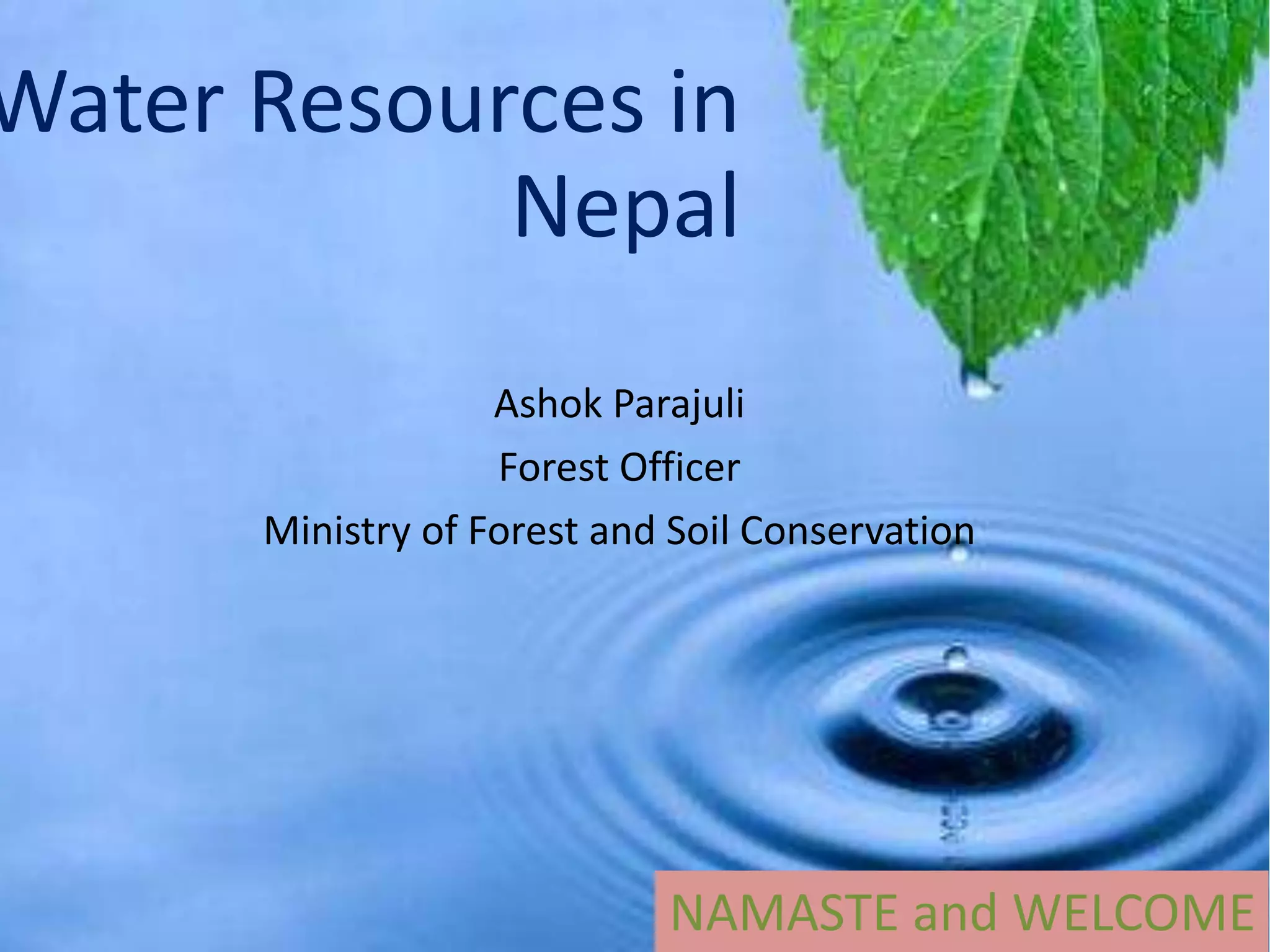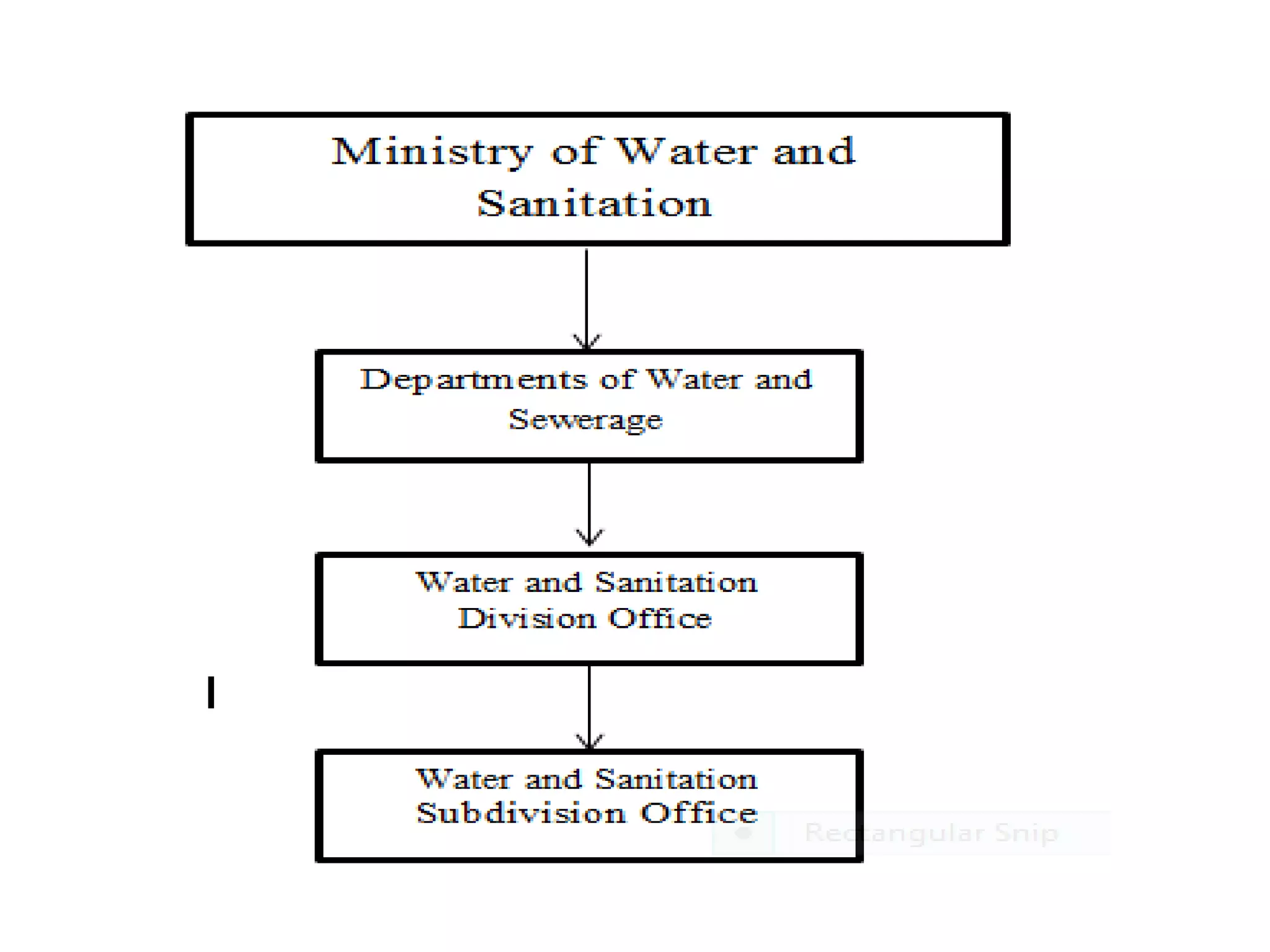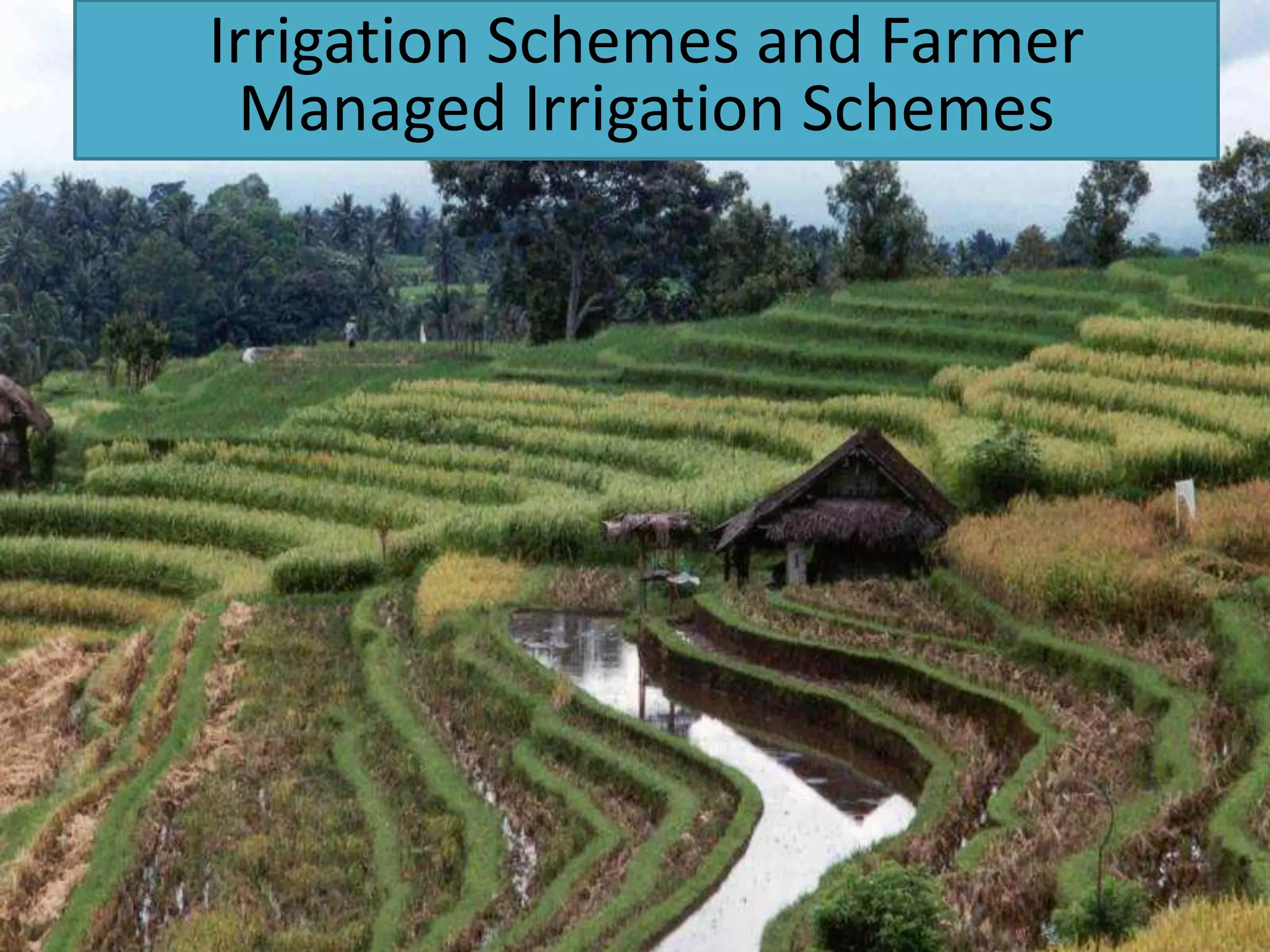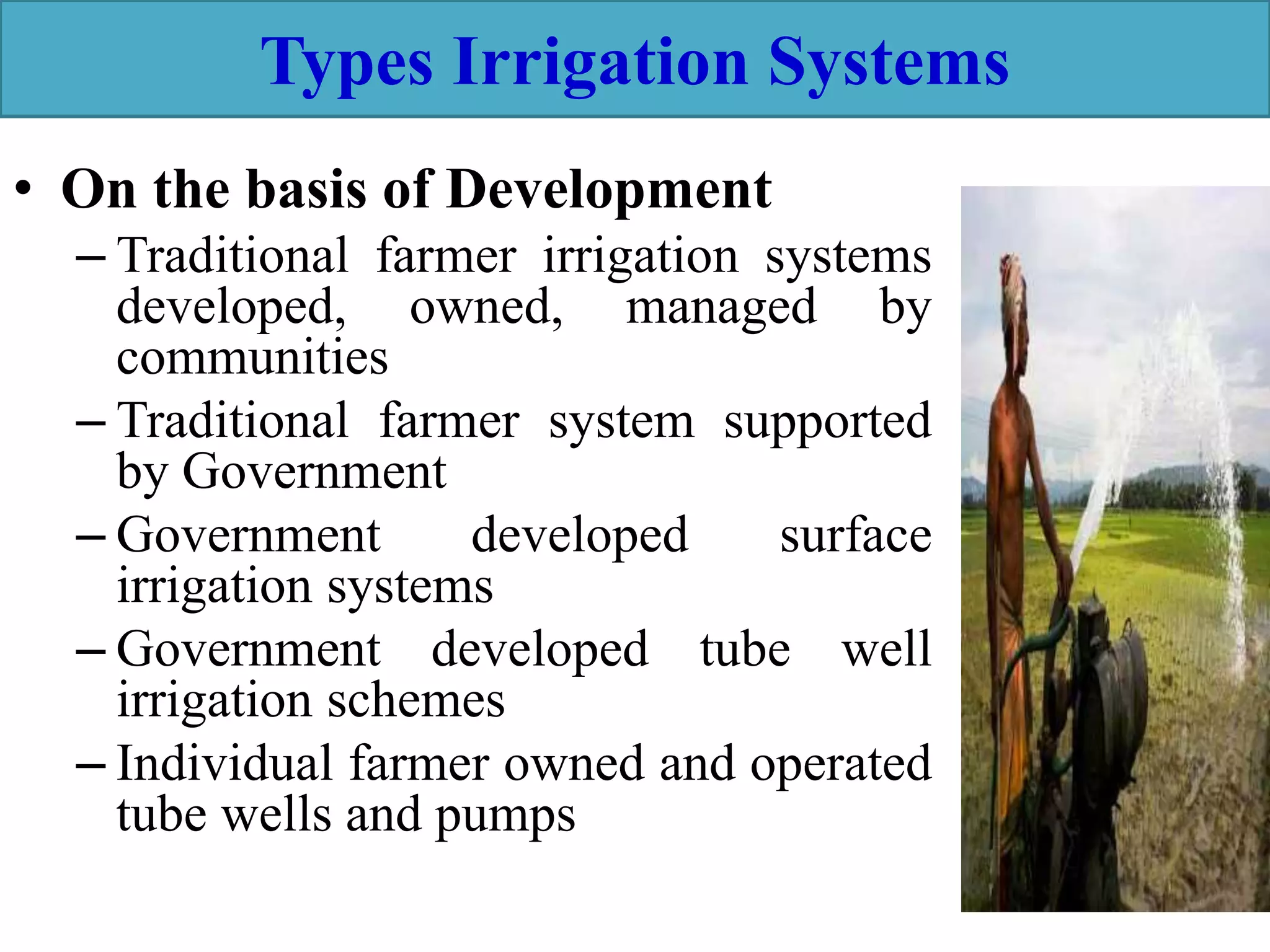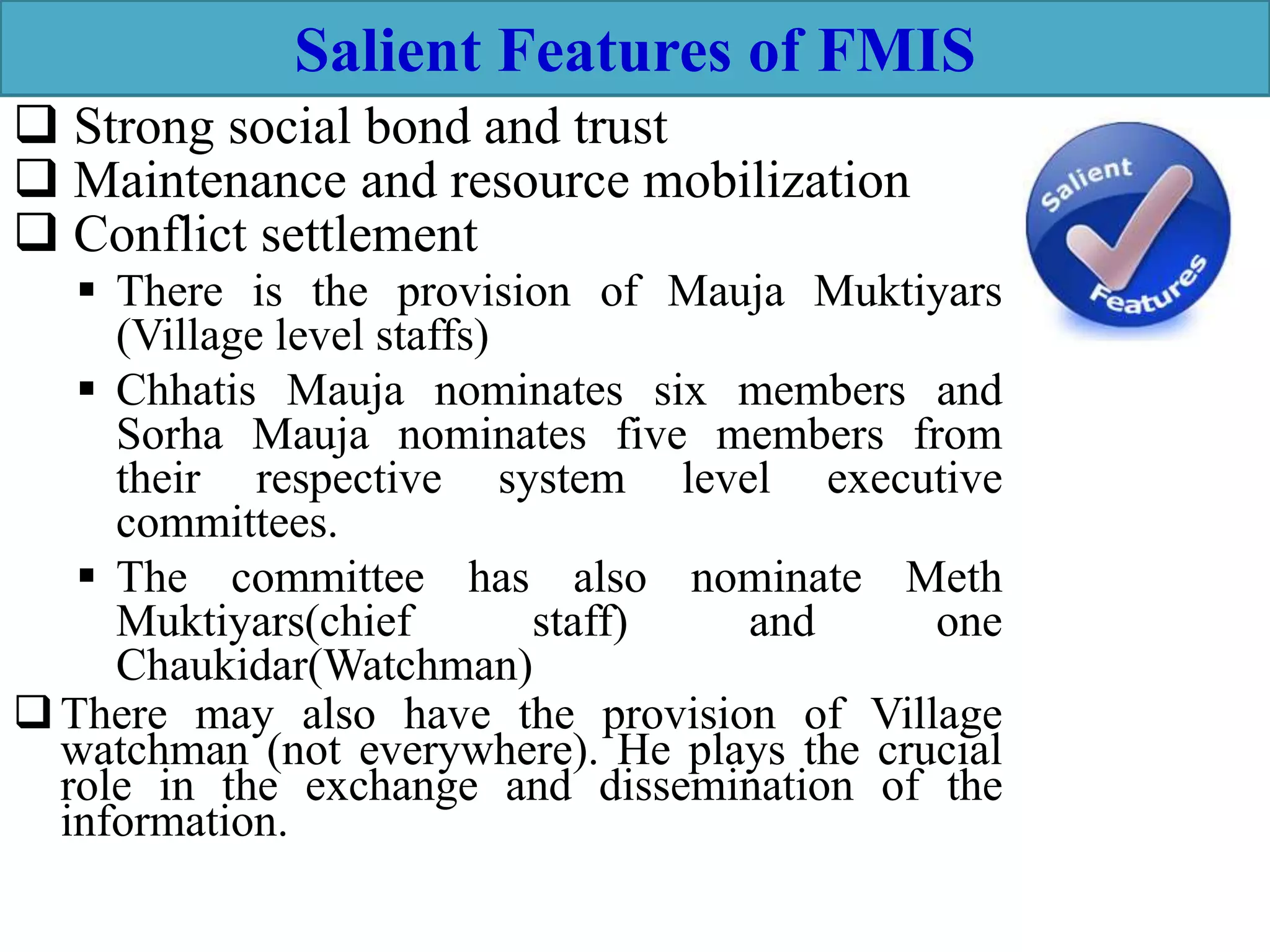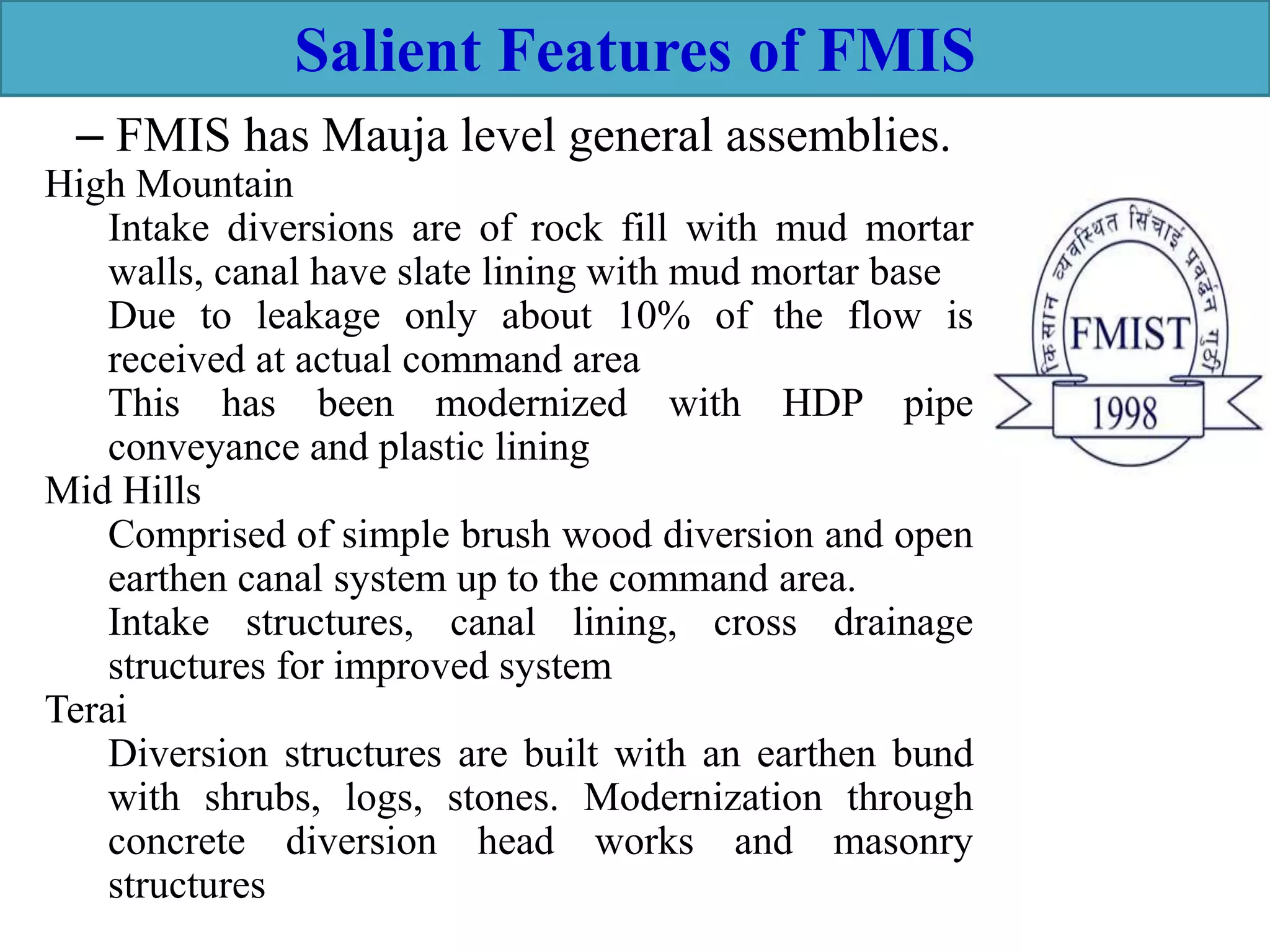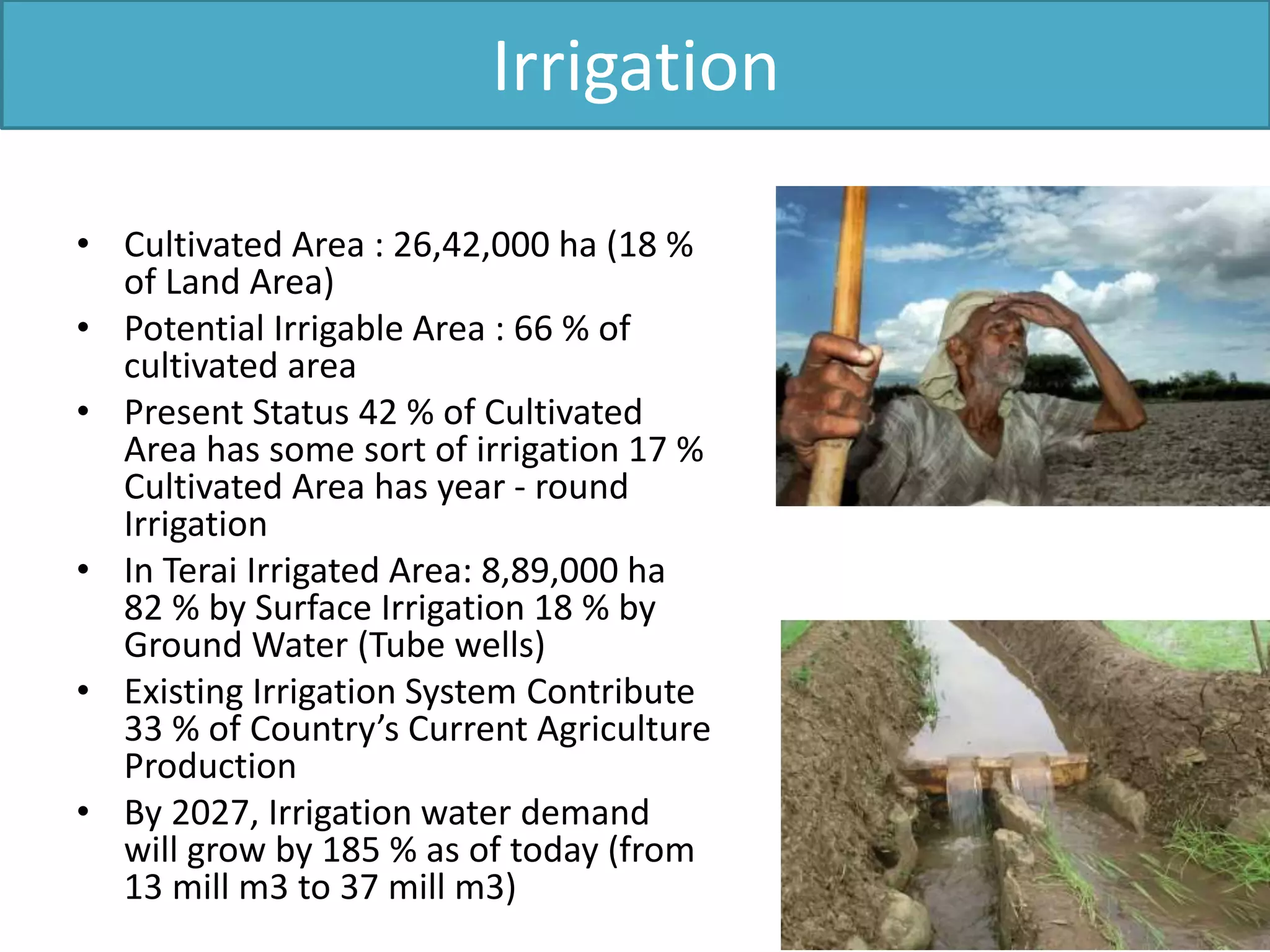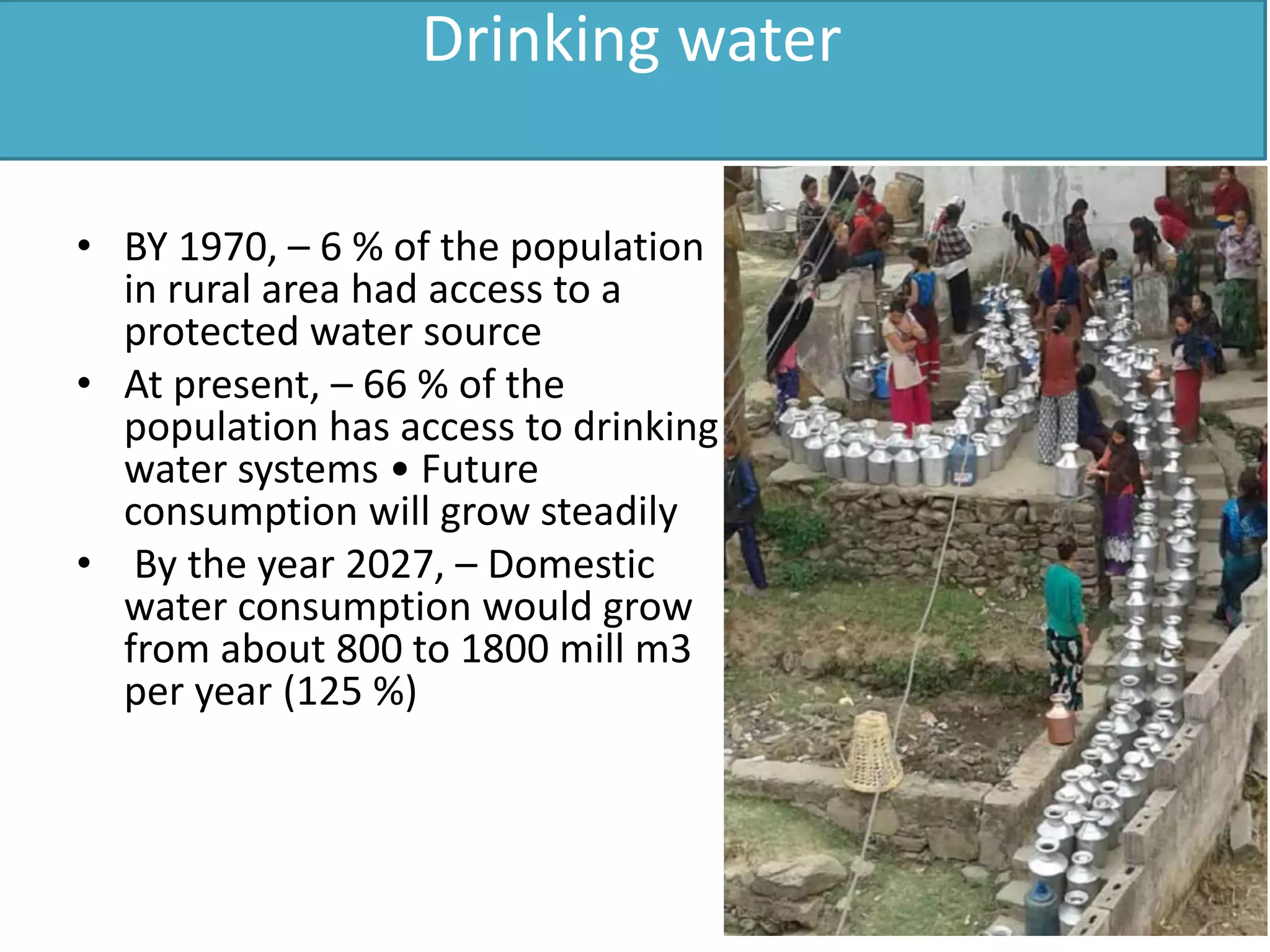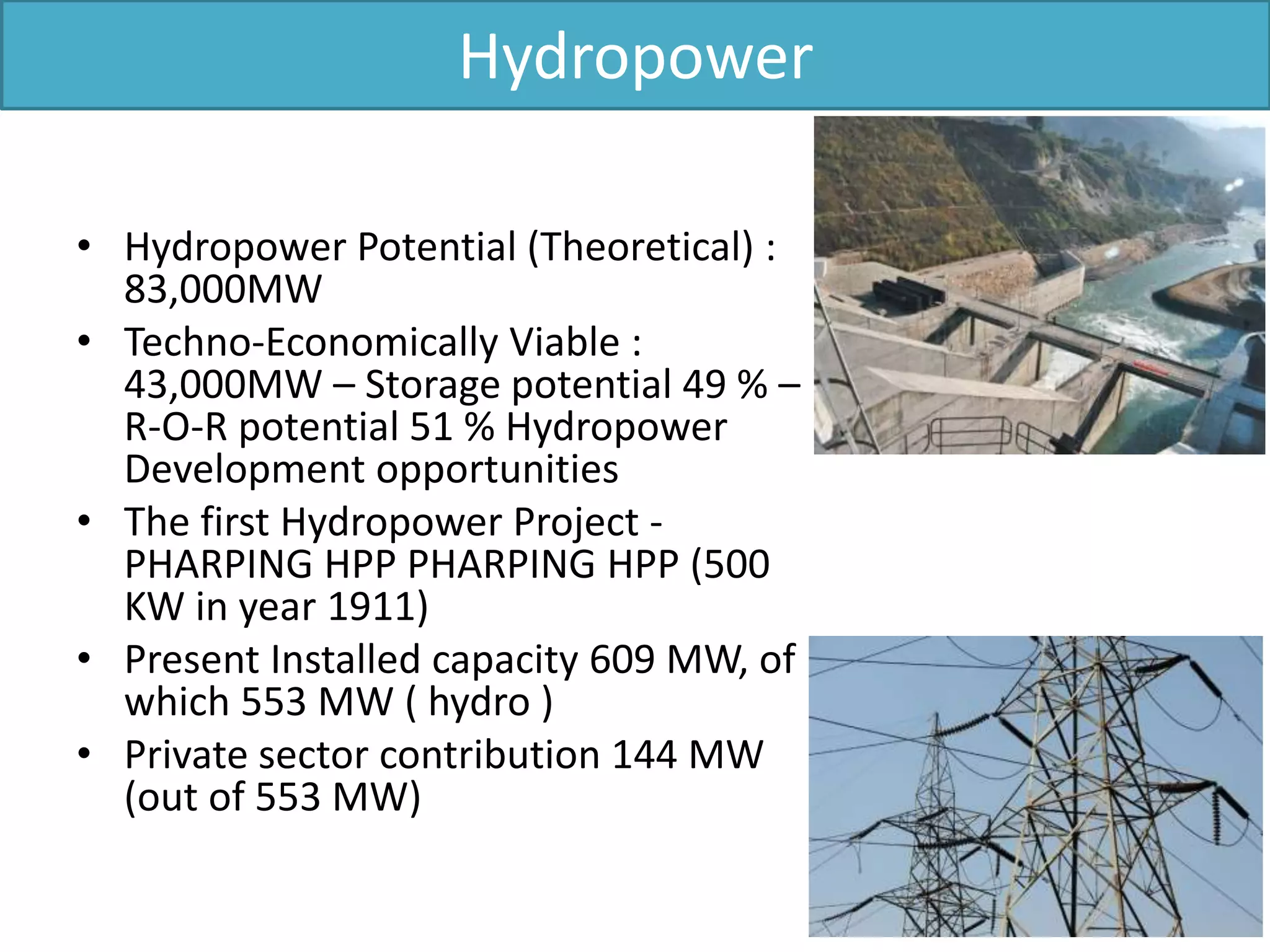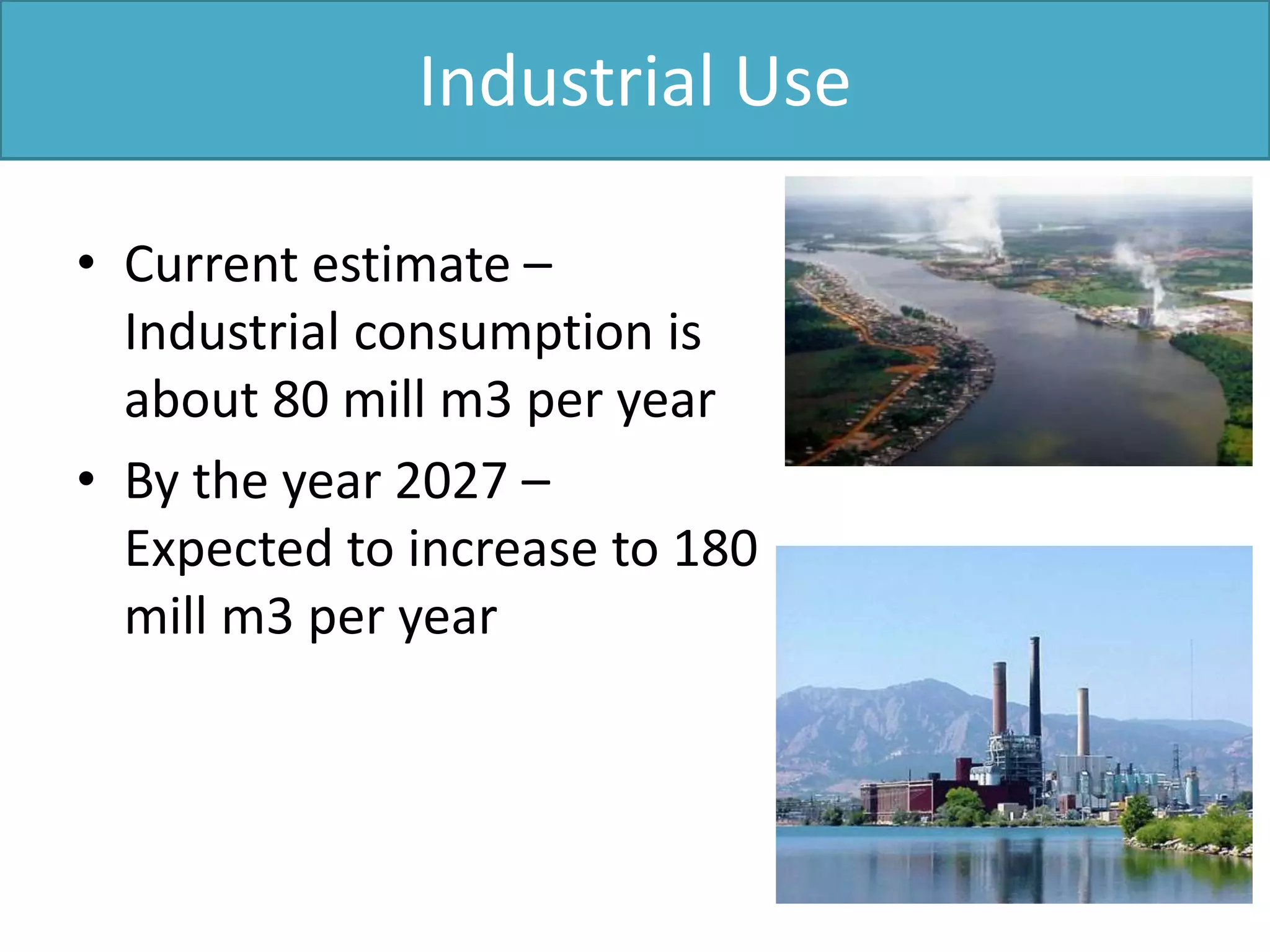The document discusses water resources in Nepal. It provides background on Nepal's water policies, legislation, and management approaches. It notes that while Nepal has abundant water resources, less than 8% is currently used for irrigation. It describes the history of irrigation development in Nepal, from traditional farmer-managed systems to modern government schemes. It also outlines key Nepali laws governing water use, management of water resources, and the roles of different agencies. Finally, it discusses irrigation schemes, the features of farmer-managed irrigation systems, and Nepal's approach to integrated water resource management through stakeholder participation.
